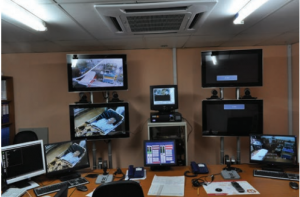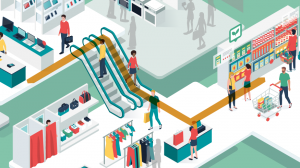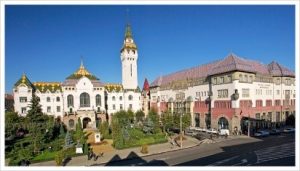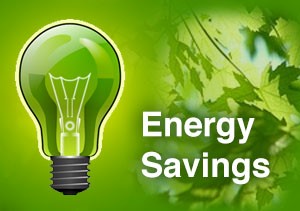Consumer / B2C Industries
Clients
who sell or provide services to consumers differ from our commercial
clients. Consumer expectations,
tolerances and touchpoints require different solutions. Our work in marketing, operations, technology
and service enables us to drive business for our clients. Introducing disciplines and practices from B2B
clients provides the means to scale up effectively while managing investments
and operating costs.
 The Government of Romania sought to deliver healthcare efficiently to historically underserved areas of the country. The majority of the population lives in rural areas or remote areas of the country with limited access to healthcare. Actionable Strategies assessed the viability of telemedicine to provide healthcare throughout Romania. The project resulted in funding for the initiative which initially saved several rural hospitals from closure and led to broad adoption of telemedicine.
The Government of Romania sought to deliver healthcare efficiently to historically underserved areas of the country. The majority of the population lives in rural areas or remote areas of the country with limited access to healthcare. Actionable Strategies assessed the viability of telemedicine to provide healthcare throughout Romania. The project resulted in funding for the initiative which initially saved several rural hospitals from closure and led to broad adoption of telemedicine.
Deliverables to the Ministry of Health included:
- Strategic Roadmap including benchmarking objectives
- Technology Strategy leading to eHealth services
- Implementation Plan covering: technology, operations, organization, financial, regulatory and citizen impact
Stakeholders in addition to the Ministry of Health:
- National Health Insurance House
- Ministry of Communications and Information Society
- Special Telecommunications Services
- Ministry of Finance
- 10 large hospitals
Information management required the implementation of national Electronic Medical Records. All technology had to be integrated with many legacy systems implemented in different municipalities.
 The project achieved the Government Of Romania’s objectives:
The project achieved the Government Of Romania’s objectives:
- Improve the efficiency of specialized care in rural areas
- Counter the effects of the decision to close hospitals and turn them into homes for the elderly
- Increase access of the patients from rural areas to the low number of medical specialists in chronic diseases (for example Parkinson’s disease, diabetes, hypertension, etc.).
- In addition, the project aligns to the objectives of the EU eHealth Action Plan 2012-2020
The EU funded the Romanian government to implement a telemedicine network for people in rural areas. Facing conversion to nursing homes, several rural hospitals instead remained open as a result of this project.
 The client is one of the largest retailers in the U.S. with over 300,000 employees working in roughly 2,400 stores. Revenues have grown steadily to over $68 billion. eCommerce and B2B are a growing components of the marketing mix.
The client is one of the largest retailers in the U.S. with over 300,000 employees working in roughly 2,400 stores. Revenues have grown steadily to over $68 billion. eCommerce and B2B are a growing components of the marketing mix.
Reverse logistics (returns) became a growing part of the clients operations and it was postulated that there was an attendant growth in shrinkage (theft). Consultants applied Lean and Six Sigma tools to evaluate the process and produce measurements.
 The solution involved a combination of process improvement and automation.
The solution involved a combination of process improvement and automation.
1. Define a Lean process that eliminated waste in a straight-through process
2. Automate the intake of merchandise
3. Implement controls to reduce shrinkage
The client was able to implement an efficient process which improved the experience for their customers. Shrinkage in the Reverse Logistics process was dramatically reduced.
 The Government of Romania sought to turn Targu Mures into a SmartCity. In Romania, the city has a prominent history. Târgu Mureș is the seat of Mureș County in Transylvania whose history is still acknowledged today.
The Government of Romania sought to turn Targu Mures into a SmartCity. In Romania, the city has a prominent history. Târgu Mureș is the seat of Mureș County in Transylvania whose history is still acknowledged today.
The “Digital Mures” SmartCity strategy had two major objectives:
- Develop a modern infrastructure of private-public services
- Envision and develop a medical IT technology park specializing in research and medical information including telemedicine
The Smart City was expected to generate monetary savings, enhance the lifestyles of citizens and improve the private business environment. Incorporating experience from Telemedicine and Smart Grid projects in Romania, Actionable Strategies concluded that the technologies could support all of the strategic objectives.
Analysis of the structure, capabilities and preparedness of the city, we concluded that a number of constraints needed to be removed prior to implementing the strategic plan. The major issues were human capital, grid interoperability, the regulatory framework, culture, and real estate obstacles including buildings, property rights and energy data. The Government of Romania embraced our strategy and proceeded. By 2019, Romania had 330 Smart City projects covering over 6 million citizens.
Client Profile
 The Government of Romania sought to turn Targu Mures, the capital of Mures County, into a SmartCity. The city is 19 square miles and located in the Mures River Valley, the center of the historical region of Transylvania.
The Government of Romania sought to turn Targu Mures, the capital of Mures County, into a SmartCity. The city is 19 square miles and located in the Mures River Valley, the center of the historical region of Transylvania.
With a population of 142,000, Targu Mures has over 8,500 private and several state-owned companies. There are 3 leading universities with over 10,000 students.
Business Objective
Targu Mures wanted to create the “Digital Mures” SmartCity strategy with two major objectives:
- Develop a modern infrastructure of private-public services
- Envision and develop a medical IT technology park specializing in research and medical information including telemedicine
Smart City Benefits
 The Digital Mures SmartCity strategy is expected to generate monetary savings, enhance the lifestyles of citizens and improve the private business environment. Actionable Strategies has worked with other government entities in Romania on similar digital transformation initiatives.
The Digital Mures SmartCity strategy is expected to generate monetary savings, enhance the lifestyles of citizens and improve the private business environment. Actionable Strategies has worked with other government entities in Romania on similar digital transformation initiatives.
 Telemedicine Objectives
Telemedicine Objectives
An objective of the strategy is to create the “Scientific City for Medical IT” to contribute to the development of telemedicine and the IT industry. Thousands of employment opportunities will be created in Targu Mures. Actionable Strategies has successfully completed a telemedicine project in Romania which proved the economic and technical viability of the model in Romania.
Smart Grid Technologies
 From a technology perspective, Actionable Strategies was engaged to assess the viability of powering the SmartCity via SmartGrid technology deployment. Our experience with SmartGrids in Romania and emerging markets was applied throughout the project.
From a technology perspective, Actionable Strategies was engaged to assess the viability of powering the SmartCity via SmartGrid technology deployment. Our experience with SmartGrids in Romania and emerging markets was applied throughout the project.
The Government of Romania sought to create a model for a Smart City which it could replicate across Romania, and throughout South Eastern Europe.
Strategic Analysis
 The strategic study considered strategy, management, technology, human capital, regulatory, cost and risk aspects of the SmartCity objectives. The major focus was on establishing a Micro Grid to deliver the power required for a Smart City.
The strategic study considered strategy, management, technology, human capital, regulatory, cost and risk aspects of the SmartCity objectives. The major focus was on establishing a Micro Grid to deliver the power required for a Smart City.
The energy strategy addressed the high cost and inefficient use of electrical and heating energy, both identified as major problems of the city. The city spends a significant amount of its budget on energy while relying on a limited number of energy suppliers, creating risk and cost issues.
Targu Mures planned for the development of an integrated system of energy production and use. Renewable resources were a major part of energy mix. Non-traditional power generation schemes included:
- Biogas
- Geothermal
- Cogeneration
Smart Grid Technologies
Powering the SmartCity considered many advanced technologies. These modern technologies were targeted for energy savings, enhanced energy efficiency and reduced greenhouse gases.
Generation
Clean generation and resilience were key technology choices.
- Distributed Generation
- Photovoltaic Solar systems
- Waste-to-energy generation
Infrastructure
Infrastructure investments were required to enable end-to-end grid management and operation.
- Advanced Telecommunications Platform
- Supervisory and Management technologies
Distribution
Advanced distribution was planned to maximize efficiency and minimize service disruptions.
- Energy Distribution Management
- Smart Metering
- Asset Management
Consumption
Technology was planned for the endpoints to optimize grid operations and maximize energy savings.
- Energy Efficient Buildings
- Public lighting technologies
Key Findings
Smart City technologies were found to be mature enough to support the digital agenda of Targu Mures. Other key constraints were identified that needed to be addressed to succeed in implementing the Smart City strategy.
Human Capital Shortage
 Implementation and operation of Micros Grid technologies necessitated improved Human Capital capabilities. This required over 12 months of lead time for extensive hiring and intensive training and hiring.
Implementation and operation of Micros Grid technologies necessitated improved Human Capital capabilities. This required over 12 months of lead time for extensive hiring and intensive training and hiring.
- Management – Experienced program and project managers are required for implementation and skilled managers will then need to run operations
- Skilled resources – Deployment and operations of the Micro Grid and Smart City technologies require a significant number of skilled engineering and scientific resources, which are not currently available in Targu Mures.
Grid Interoperability
 The incumbent power distribution company was not prepared to connect a Micro Grid to the distribution network. In addition to issues with operating over existing wiring, a number of operational issues had to be resolved.
The incumbent power distribution company was not prepared to connect a Micro Grid to the distribution network. In addition to issues with operating over existing wiring, a number of operational issues had to be resolved.
- Negotiation of the interconnect agreement
- Agreement on protection settings for bi-directional energy flow
- Net Metering for bi-directional energy flow payments and other compensation
- Time of Use pricing
Regulatory Framework
 The Romanian Energy Regulatory Authority had not defined the framework for Micro Grids and interconnection to the distribution network. Based on Actionable Strategies experience in other projects in Romania, significant delays were anticipated.
The Romanian Energy Regulatory Authority had not defined the framework for Micro Grids and interconnection to the distribution network. Based on Actionable Strategies experience in other projects in Romania, significant delays were anticipated.
Real Estate
 Municipal buildings are old, not thermally insulated, fitted with old windows, and register very large energy losses. Significant effort outside the scope of a Micro Grid would be required to make these buildings energy efficient.
Municipal buildings are old, not thermally insulated, fitted with old windows, and register very large energy losses. Significant effort outside the scope of a Micro Grid would be required to make these buildings energy efficient.
Electrical wiring, panels, heatsinks and other electrical equipment are also old and would require upgrades to attain energy savings projected from the Micro Grid.
Energy audits had not been performed to develop a phased plan to upgrade buildings based on impact and implementation cost.
Culture and Communication
 The plan lacked a strategy to address cultural issues related to energy-saving. Repeated communication over time to change behaviors that led to wasteful energy practices was not built into the plan.
The plan lacked a strategy to address cultural issues related to energy-saving. Repeated communication over time to change behaviors that led to wasteful energy practices was not built into the plan.
 In Romania, there is no culture of energy saving. For example, interior lights are turned on everywhere throughout the day when it is not necessary. Excessive temperature in rooms is addressed by opening windows.
In Romania, there is no culture of energy saving. For example, interior lights are turned on everywhere throughout the day when it is not necessary. Excessive temperature in rooms is addressed by opening windows.
 This culture is found at a larger level. Buildings do not provide the ability for tenants to control indoor temperatures, leading to tremendous waste. Sub-metering is not available leading tenants to be indifferent to energy savings. At the municipal level, individual building do not have metering leading to complete disregard for energy consumption.
This culture is found at a larger level. Buildings do not provide the ability for tenants to control indoor temperatures, leading to tremendous waste. Sub-metering is not available leading tenants to be indifferent to energy savings. At the municipal level, individual building do not have metering leading to complete disregard for energy consumption.
Recommendation
 Actionable Strategies recommended that the Government of Romania halt the impending start of the initiative until further analysis and planning was conducted. In addition, further risk management in planning was required. While disappointing, this advice was in the best interests of the client and the detailed analysis and honest assessment were appreciated.
Actionable Strategies recommended that the Government of Romania halt the impending start of the initiative until further analysis and planning was conducted. In addition, further risk management in planning was required. While disappointing, this advice was in the best interests of the client and the detailed analysis and honest assessment were appreciated.
Business Results
 The Government of Romania was better enabled to successfully embark on Smart City Strategies, including Targu Mures. Smart City initiatives have subsequently spread across Romania. By 2019, Romania had 330 Smart City projects covering over 6 million citizens.
The Government of Romania was better enabled to successfully embark on Smart City Strategies, including Targu Mures. Smart City initiatives have subsequently spread across Romania. By 2019, Romania had 330 Smart City projects covering over 6 million citizens.

